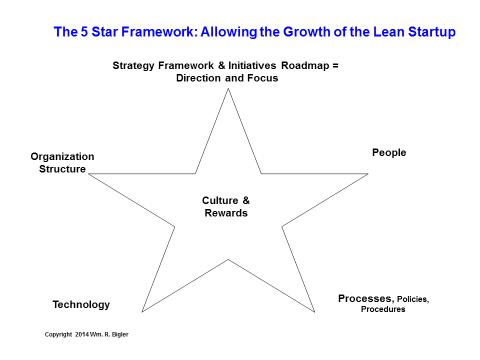This article is part of a series on what causes a firm’s value to increase
Last month’s article described the Lean StartUp Movement. But what happens next after launching your venture using Lean StartUp principles and gaining some initial traction with early adopter customers? Last month I discussed the customer or the demand side of the Lean StartUp, where it all begins. However growing or “scaling” the Lean StartUp is mostly about the supply side of the equation.
For those who do not know, Qualifier 2 of Gregory Kallenberg’s StartUp Prize on July 18-20 was a big success. Thanks also go out to John Grindley and his team at CoHab. They offer their services to help startups all year long and in my view are an invaluable resource for our community.
Growing your Lean StartUp is pretty straightforward if you are prepared for it and has the customer traction discussed above. However, if you have not contemplated what you should be doing months before your formal launch, you will probably have severe headaches if not outright failure. This article will hopefully prepare you for growth.
But wait a minute you might be saying. Revenue is simply Price times Quantity Sold. Growing revenue is simply growing the quantity sold and/or increasing your prices. Then you manage cash flows. This view is faulty – you need a holistic infrastructure to allow the growth to take place in the first place.

A good framework for this is the 5 Star Framework. I developed this with a team for established firms to be in alignment to execute their strategies. I think it is also a great tool to grow the Lean StartUp. As mentioned in the second paragraph above, a Lean Startup must start thinking about and acting like the established firm – way before formal launch. This is difficult for many entrepreneurs to do. They love their product or service and this is where the fun and excitement is. But if you do not lay down an infrastructure to accommodate growth, maybe much more growth than you planned for, your business can be swamped. Please don’t let this happen.
The following figure depicts the 5 Star Framework:

The key to this framework is that the solutions for each of the points on the star and for culture and rewards (which is the “glue” that holds everything together) must be totally compatible with each other. Also your total solution must be custom fit for each business.
Strategy Framework and Initiatives Roadmap – your venture’s strategy, goals, objectives and key strategic initiatives that are in play or will be in play. This is the formulation part discussed in last month’s article and is what the other points of the star need to be aligned with.
Organization Structure – the venture’s organizational chart. Here the direct reports to the CEO are specified along with their key accountabilities. The venture needs only the essential direct reports at this time. Combine sales and marketing into one position, nest human resources under the finance function, and use other streamlining combinations to start.
Processes, Policies, Procedures – key processes at this stage are supply chain processes, manufacturing (or some other name for turning inputs into outputs in service businesses) and financial management processes. You will want to prevent any disruption in your supply chain as this is usually the death knell for a venture. Think of what would happen to your production process if the supply of your raw materials is cut off? This is why in the early years of Amazon Jeff Bezos raised $300 million to put in world class supply chain processes. These processes where at 70% over capacity to make sure Amazon could fill growing demand. Capital budgeting, managing accounts payable and receivable, collections, inventory management, cash management, debt and risk management and tax management are crucial. Notice policies and procedures are in smaller font. You need the control policies and procedures bring, but being overly bureaucratic at this stage with too many policies and procedures is also usually a death knell for a venture.
Technology – this is the required information technology and other kinds of technology to make the work of the venture be as automated as possible. If technology can replace additional hires, make those investments early.
People – the minimum number of key positions with their associated competencies required to do the work of the venture with speed, quality and cost efficiency
Culture and Rewards – At this stage of the venture culture revolves around meritocracy, transparency and keeping commitments. One client used to say “we are a team of people who say what we mean, mean what we say and deliver what we promise”. I think this is very powerful if the venture actually demonstrates these behaviors and attitudes. Rewards are the monetary and non-monetary consequences of doing great work and meeting the objectives of the venture.
If your venture team takes the time early to start thinking about scaling up the Lean StartUp before gaining traction with customers, you will not be swamped with your increased demand.
Bill Bigler is Director of MBA Programs and associate professor of strategy at LSU Shreveport. He spent twenty five years in the strategy consulting industry before returning to academia full time at LSUS. He is involved with several global professional strategy organizations and can be reached at bbigler@lsus.edu and www.strategybest.com
